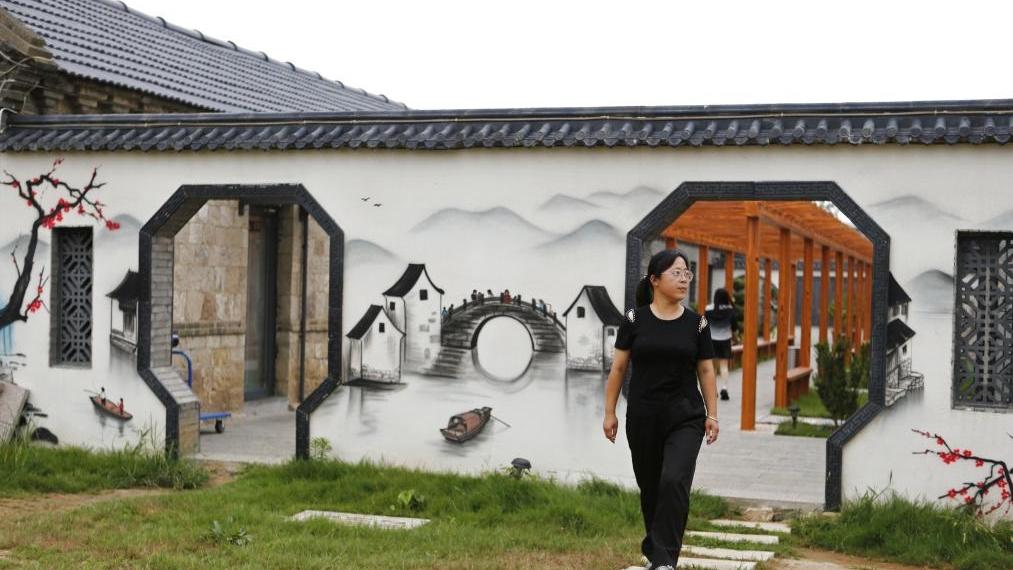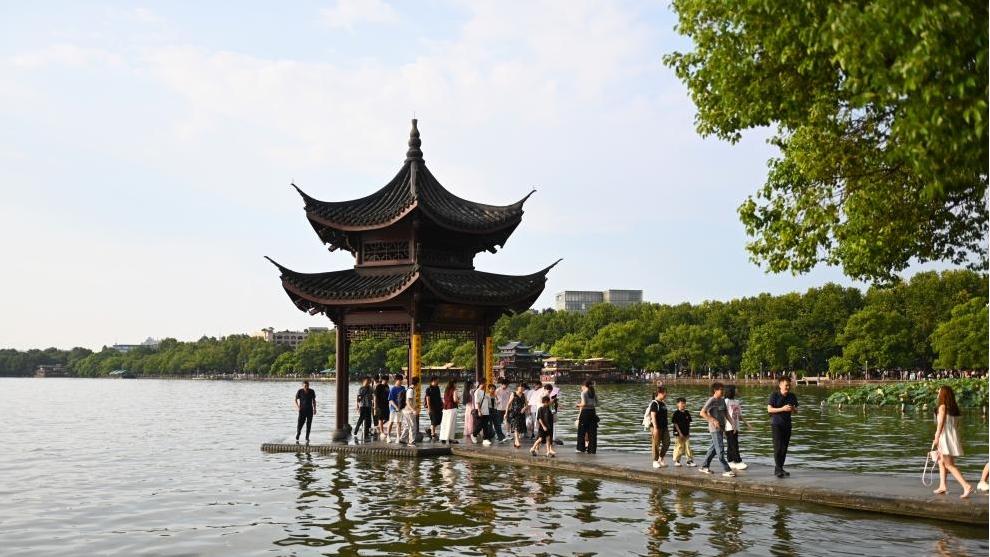Sichuan pepper industry thrives in SW China's Yunnan
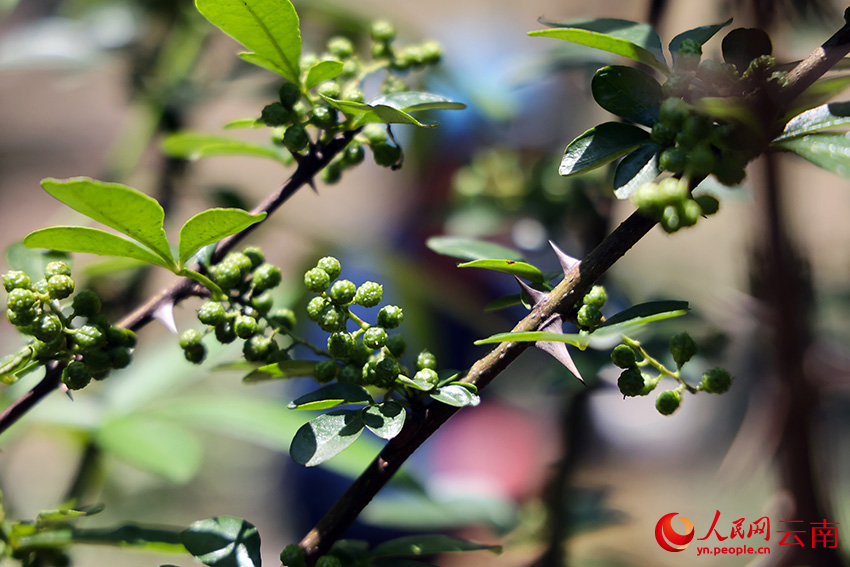
Photo shows Sichuan pepper trees in Hongshiyan village, Baogunao township, Qiaojia county, Zhaotong city, southwest China's Yunnan Province. (People's Daily Online/Xu Qian)
Zhaotong city in southwest China's Yunnan Province has blazed a path to rural revitalization by developing a thriving Sichuan pepper industry—balancing ecological protection with economic growth, and blending tradition with cutting-edge technology.
By 2024, Zhaotong's Sichuan pepper cultivation area had stabilized at 1.6 million mu (about 106,666.7 hectares), accounting for 35 percent of the province's total. Last year, the city produced 81,300 tonnes of dried Sichuan peppercorns, generating a total output value of 15 billion yuan (about $2.08 billion) and benefiting 600,000 people in 160,000 households. These achievements have made Zhaotong the largest Sichuan pepper producer in Yunnan.
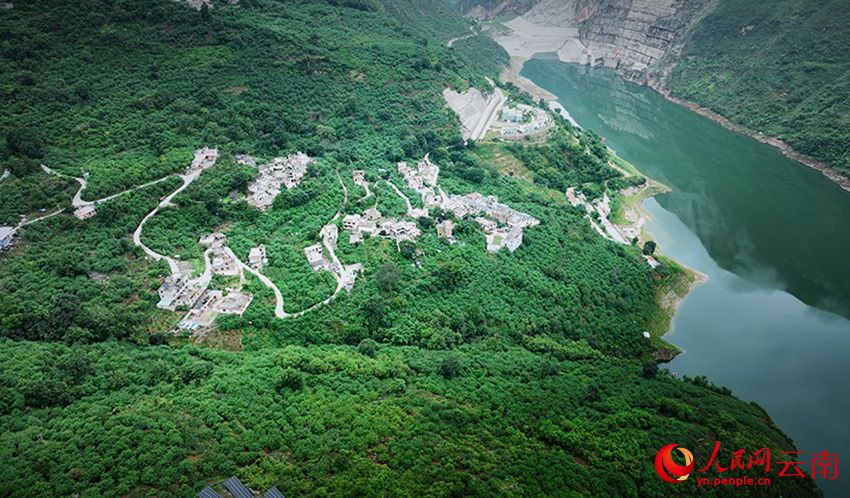
Photo shows Sichuan pepper trees in Hongshiyan village, Baogunao township, Qiaojia county, Zhaotong city, southwest China's Yunnan Province. (Photo/Deng Hanchao)
Known for their premium quality, Zhaotong's green Sichuan peppercorns enjoy the advantages of unique geography and a rich cultivation tradition. The adoption of advanced technologies has further boosted the Sichuan pepper industry.
The Kunming Institute of Botany at the Chinese Academy of Sciences has mapped the genetic code of Sichuan pepper, paving the way for improved varieties such as "Luqing No. 1," which can raise yields by 30 percent. Through collaboration among research institutions, universities, enterprises, cooperatives, and local experts, Zhaotong has certified seven superior varieties for citywide promotion.
In Ludian county, Ruan Zhongshan, head of a local Sichuan pepper cooperative, spent 15 years turning a barren mountain into a lush forest of Sichuan pepper trees covering 1,200 mu. His cooperative follows four standardized practices: unified introduction of high-quality varieties from the Yunnan Academy of Agricultural Sciences, unified pruning and refined management, centralized procurement, and bulk sales to major clients including Chinese hotpot chain Haidilao and major chili sauce maker Lao Gan Ma.
This model has pushed prices 20 percent higher than those achieved by individual farmers. In 2024, the cooperative harvested 180 tonnes of Sichuan peppercorns worth over 6.5 million yuan, helping more than 200 households increase their average income by 30,000 yuan each.
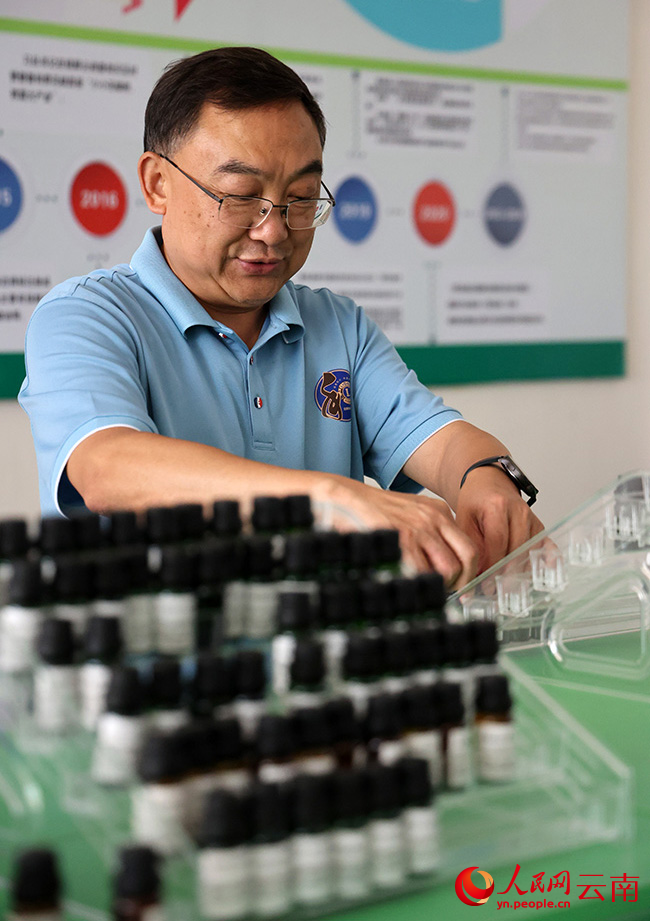
Zhao Kongfa, general manager of Zhaotong Dacheng Agricultural Development Co., Ltd., arranges samples. (People's Daily Online/Xu Qian)
In Qiaojia county, Zhang Dengguo, head of a planting cooperative, said that integrating a water–fertilizer drip irrigation system with drone-based pest and disease monitoring has raised per-mu yields from 30 kilograms to 150 kilograms.
At the cooperative's intelligent drying workshop, six heat pump dryers process freshly harvested Sichuan peppercorns—delivering higher quality than traditional sun-drying and commanding a premium of 16 yuan per kilogram. In 2024, the cooperative's 700 mu of pepper trees generated over 5 million yuan in net profit, helping 49 farming households increase their average income by 100,000 yuan each.
Zhaotong Dacheng Agricultural Development Co., Ltd., a national high-tech enterprise, extracts essential oil with 99.8 percent purity from Sichuan pepper—500 milliliters of which is worth as much as a tonne of raw peppercorns, according to Zhao Kongfa, general manager of the company.
The company has developed 28 products in three categories: seasonings (such as hot pot soup bases and Sichuan pepper oil), personal care (anti-hair-loss shampoo and antibacterial hand sanitizer containing 5 percent essential oil), and biopharmaceuticals (pepper amide extracts). In 2024, it contracted with 5,000 farming households, with value-added processed products making up 65 percent of sales.
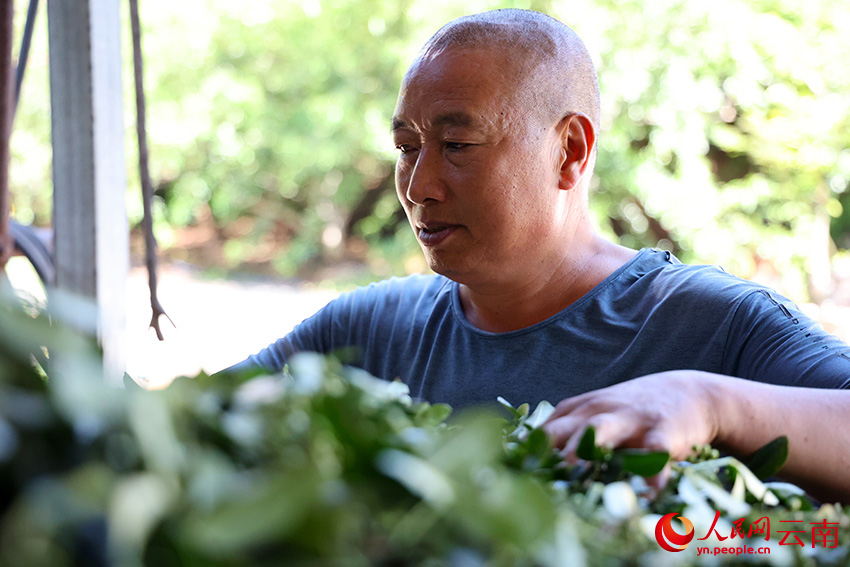
Photo shows Ruan Zhongshan, head of a Sichuan pepper cooperative in Ludian county, Zhaotong city, southwest China's Yunnan Province. (People's Daily Online/Xu Qian)
In Ciyuan township, Ludian county, the Sichuan Pepper industrial park—southwest China's largest—serves as the nation's premier green Sichuan peppercorn trading hub. According to Chen Zhibing, general manager of Yunnan Yanchi Mountain Agricultural Development Co., Ltd., the park's daily trading volume reaches 100,000 kilograms. The figure is expected to exceed 250,000 kilograms by mid-August. A long-term deal with Haidilao for 800 tonnes annually, combined with a cold-chain logistics system, ensures that Sichuan peppercorns go from trees to dining tables in just 48 hours. In 2024, the park's transactions surpassed 4 billion yuan.
In addition, Sichuan pepper trees help preserve soil and water in Zhaotong, especially in its dry-hot valleys.
In Hongshiyan village, Baogunao township, Qiaojia county, earthquake ruins have given way to lush Sichuan pepper forests. Village Party chief Liu Ming said that a 20-million-yuan photovoltaic water pumping station for irrigation now irrigates 2,000 mu of pepper groves daily, using barrier lake water and solar energy.
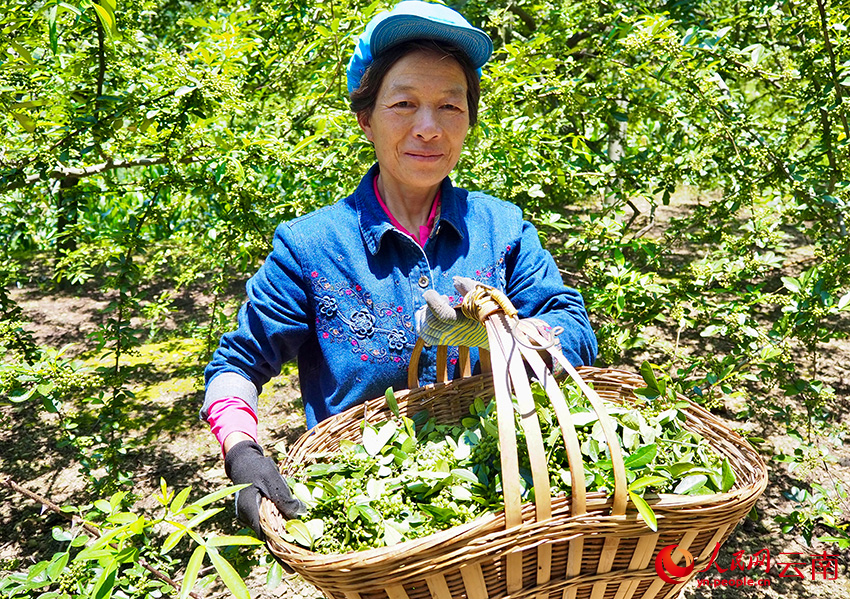
A farmer shows freshly harvested Sichuan peppercorns in Zhaotong city, southwest China's Yunnan Province. (People's Daily Online/Wang Xian)
The station not only solved drought issues but also boosted yields by 30 percent. Even more notably, the barrier lake—once a hindrance to rescue efforts—has been transformed into a "hydraulic jewel" through ecological restoration, offering a new model for global barrier lake management. In 2024, the village's Sichuan peppercorn output value exceeded 30 million yuan, with average household income reaching 68,000 yuan.
Photos
Related Stories
- Pepper industry thrives in S China's Hainan
- Chili pepper harvest festival held in Inner Mongolia
- Production of green pepper seedlings in full swing in county in N China's Shanxi
- Pepper acreage exceeds 360,000 hectares in SW China's Guizhou
- Pepper production becomes pillar industry in China's SW
- 8 tons of peppers used to create giant flag on peak
- Farmer dries peppers in NW China's Xinjiang
- Pepper harvest bathes Shanxi village in sea of red
- Hot pepper is the main dish
- Pepper enters harvest season in S China's Guangxi
Copyright © 2025 People's Daily Online. All Rights Reserved.








